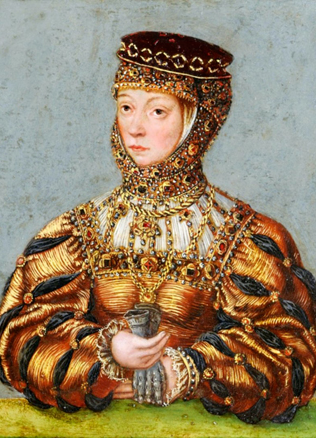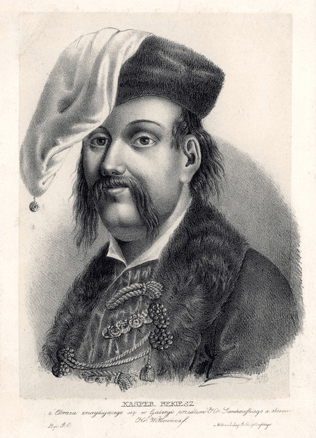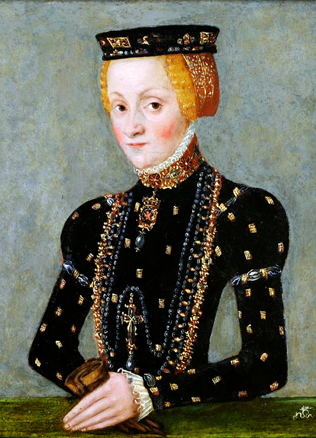Towards the institutional state: the early organisation of offices
The Old Lithuanian State existed as a political formation created on the basis of interrelations between people rather than on the state governed by institution. The relations of personal subordination and solidarity of the Ruler, his relatives and the representatives of the nobility played an important role in such a political system. It was only in the sources of the first half of the 14th century that the rudiments of the new administration – the local authorities started to be revealed. The organisation of the castles and estates of the Grand Duke began to become apparent. The officials appointed by the rulers were in charge of these castles and estates – castellans (castellanus) and elders (capitaneus). The first to be testified to in the sources are the elders: in 1363 the Elder of Veliuona Goštautas, in 1365 the Elder of Vilnius Dirsūnas, in 1369 the Elder of Paštuva Girdavas, and in 1377 the Elder of Trakai Pekstė. The model of the Castle districts most likely was taken over from the neighbouring countries. That was the first step in forming the system of the local authorities directly subordinate to the Grand Duke in Lithuania. Meanwhile there was no administrative apparatus of the central power in pre-Christian Lithuania yet.
Four columns of the central power
This political organisation of the early monarchy existed until the times of Grand Duke Vytautas. It was only at the end of the 14th– the beginning of the 15th centuries after the period of Lithuania’s political isolation had ended and contacts with the neighbouring countries had strengthened that conditions for starting the reforms of the state governance were created. The Marshal was in charge of the estate, took care of organising journeys, transport, reception of the envoys, ceremonial matters of the estate. The broad competence of the Marshal determined the fact that some time later their number in the estate was increased; there were already several of them, with the Grand (Land) Marshal at the head (the first mention was made of Stanislav Czupurna in 1407. We know who the first treasurer in the times of Vytautas was. It is characteristic that one of the few foreigners among the Ruler’s officials, the nobleman of Polish origin Jerzy Strumiłło was given this appointment that required specific abilities. Perhaps, excluding the Treasurer, competence of other officials of that time was a relative matter, no strict distribution of functions existed, and no interrelations of subordination were established. One can speak about certain spheres of the activity of the officials, which were defined by the Ruler’s trust and personal features of the noblemen. At the beginning of Casimir’s rule in 1441, the office of the Chancellor, who later became the most significant official of the central authority, was testified to for the first time in the sources. Sudivoy Volimuntowicz, a relative of the noblemen Kęsgailiai became the first head of the chancellery.
The office of the Commander of the army, which was the last to appear, ended the formation of the structure of the central authority.
In the Middle Ages, the army leadership was the duty of the Ruler therefore there could be no separate institution of the Commander of the army for a long time. True, in 1455, the highest Commander of the army Andrzej Sakowic was mentioned but he was appointed temporarily only because this nobleman did not turn up with this title a second time.
Do You Know?
Constant office of the army Commander – the hetman – is found at the turn of the 15th–the 16th centuries after the epoch of constant wars with Moscow had started. It was for a long time that appointments of Hetmans were perceived as temporary nominations of the army leaders, and only in the second half of the 16th century they were begun to be appointed for life. The origin of the word “hetman” reveals the nature of this office very well. The word came into the Slavic (Czeck, Polish, Ruthenian) languages from the old German word hauptman, which meant “commander” in the most general sense. With the organisation of the army of the Grand Duchy of Lithuania changing, at the beginning of the 16th century, a division of the activity of hetmans appeared: the Grand Hetman headed the conscript army of the noblemen, and the Field Hetman headed the mercenary army. Hence, in the 16th century four offices of the highest central power were established in Lithuania – the Chancellor, the Grand (Land) Marshal, the Grand Hetman and the Grand (Land) Treasurer.
From the Duke’s confidential agents to the state officials
The right to appoint officials was vested in the Grand Duke. True, it was restricted by two provisions formulated in the 15th century: according to the 1447 privilege of Casimir Jagiellon, the Ruler undertook to the noblemen of the Grand Duchy of Lithuania to appoint only the local noblemen to the offices (the so-called norm of de l’indigénat law), and in the 1492 privilege Alexander Jagiellon agreed to coordinate the appointments with the Council of Lords. Furthermore, the district privileges to Samogitia, Polotsk and Vitebsk permitted the noblemen of these lands to nominate their candidates to the offices of local voivodes or elders. However, alongside these legal norms the Ruler’s choice was restricted by strict customs though they were not recorded in writing anywhere. The most important offices were always filled in only by the noblest persons of the country. The most important dignitaries were ruled by a small group of the most influential relatives of the nobility, which established the practice of the policy of uniting several offices in the hands of a single person. For example, from the second half of the 15th century the Chancellor of the Grand Duchy of Lithuania simultaneously was the Voivode of Vilnius. The tradition of a gradual promotion in the office formed. The highest offices were given for life and could be taken back only for severe crimes. Offices did not become inherited in Lithuania; however, many offices were filled in by the representative of the same family from one generation to another.
Offices were perceived as a matter of power and honour therefore there was no fixed remuneration for them.
True, some officials received the estates of the Grand Duke for their merits.
Do You Know?
The organisation of the local authorities developed simultaneously with offices of the central power. In the 15th century the hierarchy of offices of the local authorities was already in effect: voivodes and castellan, deputies (elders), castellans (horodnyčiai), standard-bearers, marschalcus equorum (Pferdemarschalk), key-bearers. Hence, the earlier personal relationship between the Grand Duke and the nobility was finally moved to a territorial and administrative level.
Elders (deputies) were the Ruler’s representatives in local communities of the noblemen which, following the example of the Poles bore the names of the districts. Meanwhile the tivuns managed small rural districts of the Grand Duke, which were not so much an administrative unit but sooner fiscal-obligatory ones. After the 1413 Union of Horodle, following the example of Poland, broader local governmental structures of a new type were begun to be established in Lithuania – voivodeships, which were headed by voivodes with their assistant castellans. Vilnius and Trakai voivodeships established in 1413 covered the territory of the nucleus of Lithuania and coincided with the boundaries of the old dukedoms of Vilnius and Trakai. The Samogitian eldership established at that time equalled them in its status. Other voivodeships appeared in the Ruthenian lands of the Grand Duchy of Lithuania which preserved their independence: in 1470 Kiev voivodeship was founded, in 1504 – Polock voivodeship, in 1507 – Naugardukas voivodeship, in 1508 – Smolensk voivodeship, and in 1511 – Vitebsk voivodeship. In 1514, the territory of Palenkė became a voivodeship too.
Do You Know?
The formation of the unified structure of the local authority enabled the consolidation of the territory of the Grand Duchy of Lithuania to be continued successfully. All these changes reflect the turning point in the state system during which the early medieval organisation of government based on personal interrelations turned into an institutional state of the early modern times.
Rimvydas Petrauskas



